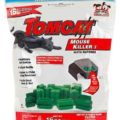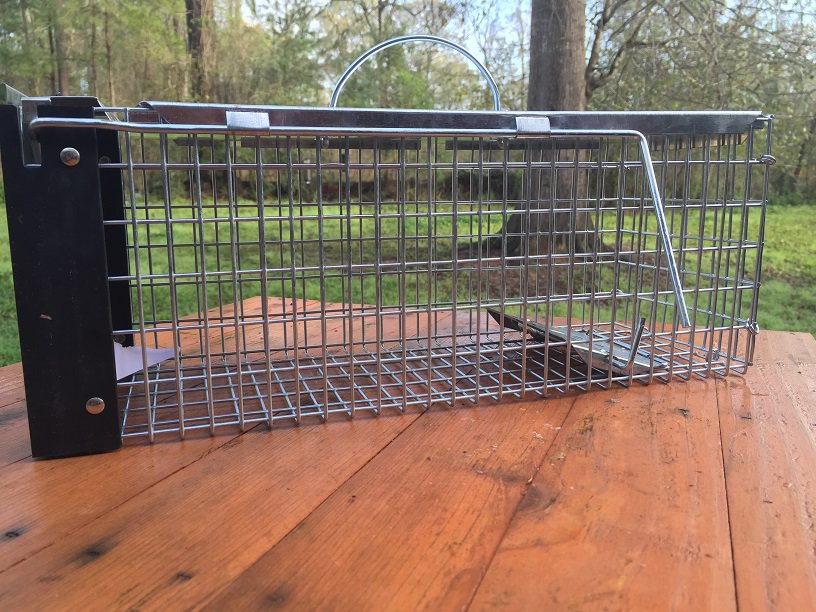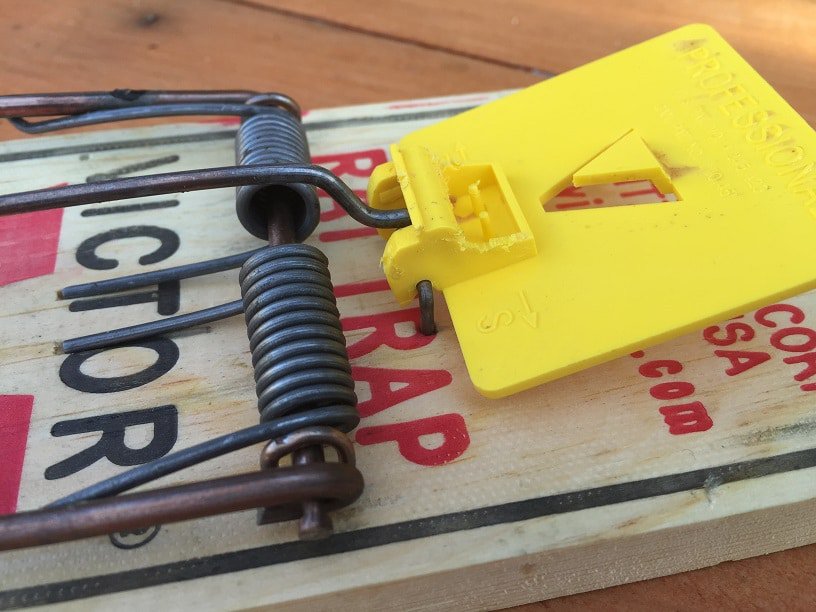Table of Contents
There are a lot of different rat traps on the market that range from classic snap traps to the much more sophisticated electronic rat zappers. There are pros and cons of each type of trap and today I wanted to take a deep dive into one in particular, bucket traps.
Let’s take a look at bucket rat traps to see which are the best, how to make your own, how to use them most effectively and how humane these traps are.
What Are The Best Bucket Trap For Rats
We’re going to start by looking at two of the simplest and most effective bucket-style rat traps: the “Walk the Plank” and the “Rolling Log” varieties. Each of these rat traps makes use of basic physics to trick rats into condemning themselves with the simple allure of food.
Some variations of bucket-style rat traps involve the addition of standing water into the bucket. This is done to slowly drown the rat after it falls into the bucket, something we consider to be highly inhumane. So, in this article, we’re going to be sticking to water-less rat traps that capture and retain live rats that can be disposed of when the time comes to empty the trap.
Walk the Plank
As you can see in the video below, the Walk the Plank rat trap is composed using a gravity-actuated platform that drops out from beneath the rat, sending it into the bucket below. In order for this rat trap to work effectively, it must be placed in a location where rats are known to be active, and the most attractive bait should be used. Peanut butter is a fantastic option for this.
As the rat makes its way out onto the platform containing the bait, the rat’s own weight triggers a spring-loaded catch that removes the platform from underneath the rat. This happens in a split second, not giving the rat enough time to react.
The fall from the platform into the bucket isn’t far enough to cause injury to the rat, and because the walls of the bucket are smooth and straight, there’s no way for the captured rats to escape.
After the rat falls into the bucket, the platform snaps back into position, ready to send another unsuspecting rat into the bucket.
Rolling Log
In the same video above, you’ll see a Rolling Log rat trap in action. This style of rat trap doesn’t require the rat to travel very far in order for the trap to activate. Instead of using a spring-loaded platform, the Rolling Log uses a—you guessed it—rolling log to capture the rat.
It works like this:
First, a dowel-shaped log made of smooth material (ideally polished metal), is installed horizontally inside the bucket. This ‘log’ is then coated with bait to entice the rats to crawl onto it from the holes that are drilled in opposing sides of the log. Leading into these holes are two ramps that give rats easy access to the trap.
Second, before long, the body mass of the rat is going to wind up on either side of the log, causing it to spin. This spinning action is the genius of the rolling log rat trap, and it sends the rat down into the bucket without hurting it. Because the rat never gets a chance to devour the bait on the long (at least, not all of it), this rat trap remains useful for catching more and more rats.
An addition can be made to the rolling log to ensure a higher success rate of trapping rats. This addition involves the use of a doughnut-shaped ‘obstacle’ that rats must traverse in order to crawl the entire distance of the rolling log. Refer to the video above for more information on how to make this modification.
Homemade Ideas
Interested in making your own, homemade rat traps? Here’s a great video that shows you how to use a medium-sized piece of cardboard, a long, slender piece of metal, and a plastic bucket to create your own rat trap.
As you might have noted by now, the best rat traps are often the simplest in their design. Even though rats are highly intelligent animals that learn from their mistakes, they’re not smart enough to anticipate trap doors and the consequences of stepping out onto a rolling log coated in peanut butter. Using this ignorance against the rat is a surefire way of catching it.
In another great video below, you can learn how to create a simple, inexpensive trap that only requires the bucket, a coat hanger, and a plastic bottle. This trap could be said to be a variation of the Rolling Log trap, only instead of using a dowel-shaped piece of metal, a repurposed spray bottle is used as the ‘log’.
Both of these homemade traps can be customized and modified to enhance their effectiveness. It might also make sense to experiment with different baits, ranging from bird seed to stale bread.
Why Use Bucket Traps?
There are many reasons to use bucket traps as opposed to poisons, snap traps, or even electronic rat traps.
First and foremost, bucket-style rat traps are safe for use around pets and children. As long as the bait itself is not toxic, there is little if any risk of harming another living thing.
Also, bucket-style rat traps are great for catching rats that live outdoors. Outdoor rats can be especially nimble and agile, but they’re no match to a well-constructed rolling log or walk the plank trap.
Another great reason to use this style of trap is because they can catch multiple rats without needing to be emptied. Using a big enough bucket, it’s not unreasonable to catch a dozen or more rats with a single trap.
Lastly, these traps are very inexpensive. The total cost for all of the materials needed to build one shouldn’t exceed $20 per trap.
Tips To Make Traps More Effective
There are a few steps you can take to further increase the efficiency and effectiveness of these traps.
- Put out as many traps as possible. This is done to eliminate the population quickly. More traps with more bait will logically yield more caught rats.
- Identify what is attracting the rats in the first place, and strategically place your traps accordingly. Rats need two basic things in order to survive: food and water. Wherever they can find either, they’ll want to go there. Locate where the food and water sources are, and you’ll know where to place your traps.
- Monitor your traps for chewing or clawing damage. Virtually every trapped rat is going to try its hardest to escape from its cage. That means clawing and chewing at anything it can. Be sure to monitor your traps to make sure rats aren’t compromising it.
Are Bucket Traps Humane?
Not everyone takes the same approach to managing a rat problem. Some people care if they are humane to rats, and some people just want to kill them off with no regard given to their welfare.
So, are these traps humane? The answer is that it depends.
These traps are not humane if you fill the bucket with water and let the rats drown after they’re caught. These traps are partially humane if you release the rats after capturing them. It’s only partially humane because a rat released into the wild is likely to simply be devoured by a carnivorous predator.
When it comes to the humaneness of these traps, it’s important to keep these points in mind:
- When the time comes to empty the rat trap, the rats contained within it will have been trapped for hours and will be highly stressed.
- You will probably end up releasing the rats in the daytime at a location far from where you caught them.
- A stressed rat that is exposed during the day in a strange location is not going to know where to find shelter, and it is likely to die quickly.
To operate your traps in the most humane way possible, it might be helpful to learn more about rats and how they live by reading this article.
Conclusion
Bucket traps are inexpensive, easy-to-make, and highly effective when placed in the right locations and when the right bait is used. Even the most stubborn rat problem can be addressed through the common-sense use of these traps.
The “Rolling Log” and “Walk the Plank” -style rat traps are two of the most popular styles of rat traps, and they can be deployed both indoors and outdoors without posing a risk to pets or children.
Learning about rats, their behavior, and their habitat preferences will help you in formulating a humane, sensible approach to eliminating your rat problem for good.





